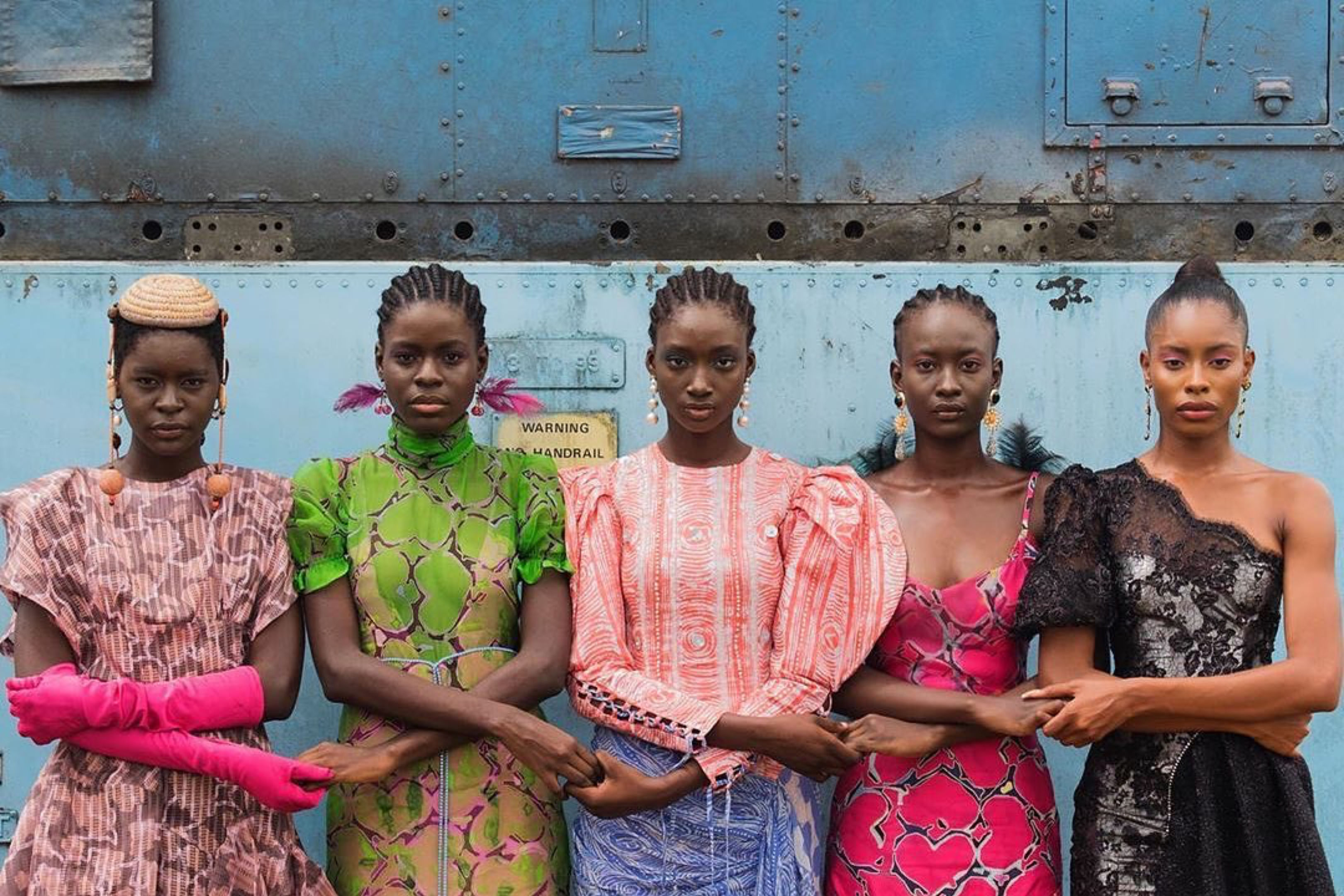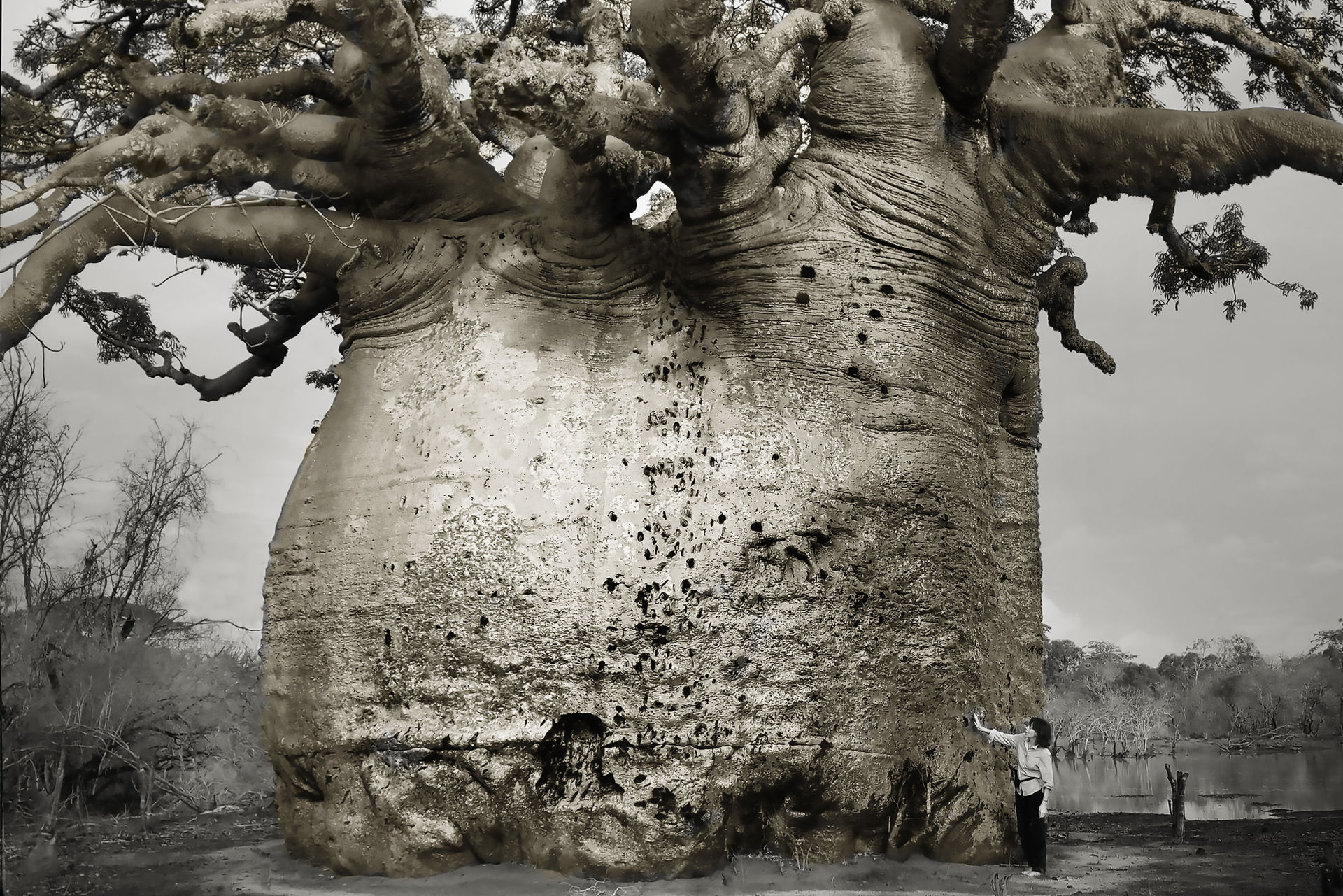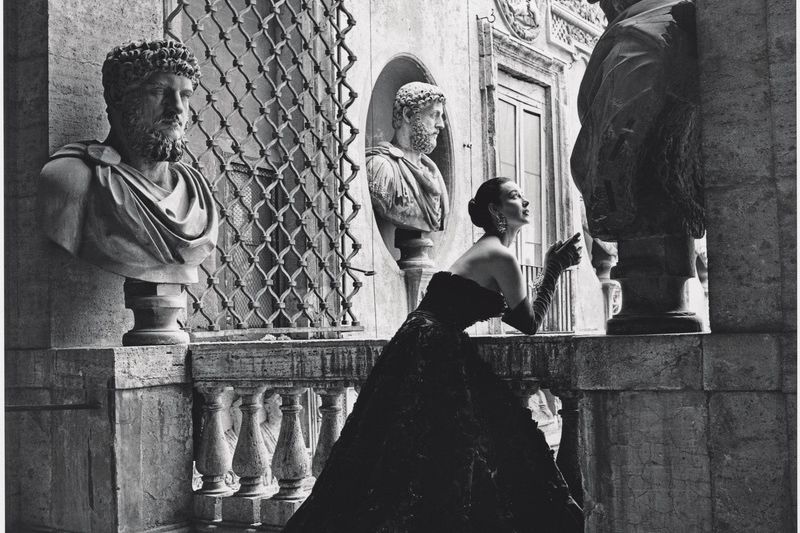
The Portland Art Museum's Extravaganza of Italian Fashion
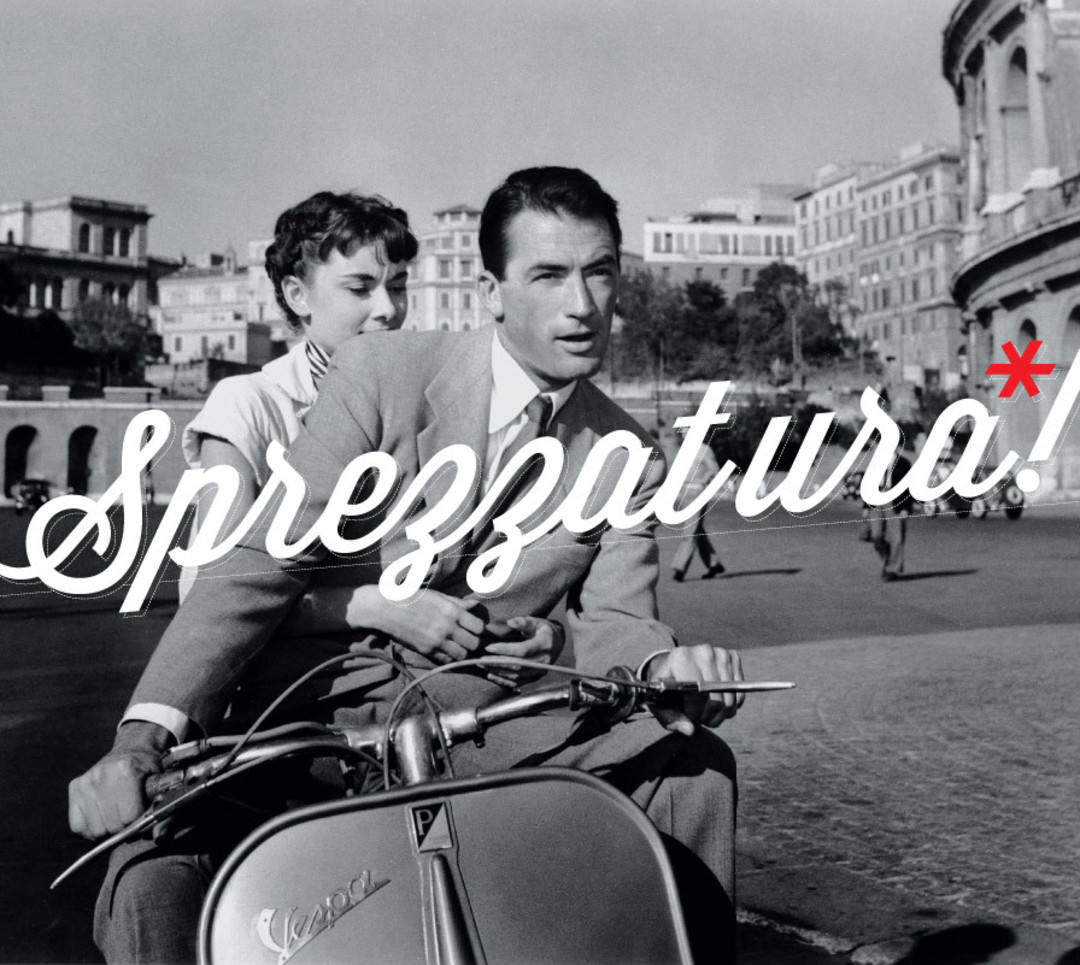
Portland Art Museum’s exhibit cites touchstones like 1953’s Roman Holiday to document Italy’s conquest of global glamour.
*Roughly, a nonchalant, casual sense of style (see Gregory Peck, above)
Portland may have style. It may have quirk. It may have Project Runway winners falling out of its cupboards. Portland does not, no disrespect to anyone, really do true high fashion. So, on the one hand, perhaps it’s a tad cheeky of the Portland Art Museum to devote three months to Italian Style: Fashion Since 1945, a massive installation of glorious objects that tells the story of how an impoverished country turned centuries of masterful craftsmanship into an international brand. On the other hand, this globally significant exhibit’s arrival here makes its own kind of sense.

Through images like this 1952 Harper’s Bazaar photo showing a silk evening dress, Simonetta and other Italian designers defined and redefined midcentury feminity. Simonetta evening gown of embroidered silk, Published in Harper’s Bazaar, October 1952, courtesy Genevieve Naylor, Genevieve Naylor/courtesy Staley-Wise Gallery, New York, ©Victoria and Albert Museum, London
Americans have dandied up in Italian style ever since Yankee Doodle stuck that feather in his cap and called it macaroni. Nowadays, thousands of prime retail acres on Fifth Avenue and Rodeo Drive are dedicated to Italian designers and their works. Even so, the nation hasn’t always been a major exporter of style: for centuries, Parisian designers lorded over the fashion world. Since the 1950s, though, and particularly in America, Italian style has been ascendant, and the likes of Armani and Missoni have come to feel more comfortable—homier, perhaps—than Chanel or Saint Laurent. For Portland, a city enjoying a heady moment as something of an aesthetic trendsetter (see lumberjack fashion strutting through European capitals, see mason jars holding cocktails in Japan), Italian fashion’s origin story and historical arc may offer a tantalizing model of sustained influence, albeit on a vaster scale.
It’s partly a question of tone. Just as French cuisine long daunted Americans with its rule-bound models of how to cook and eat, so French fashion always seemed exotic, expensive, elite. In contrast Italian style, like Italian food, seems relatively carefree, unpretentious, and accessible, brought to the US not by the wealthy or by arbiters of taste but by ordinary folks, often immigrants. In the decades following World War II, Italy gave the fashion world artful sportswear, beach and ski outfits, ready-to-wear clothes, and, for men, the unstructured suit: stuff that you can afford, and can relax in, and that still makes you look great.
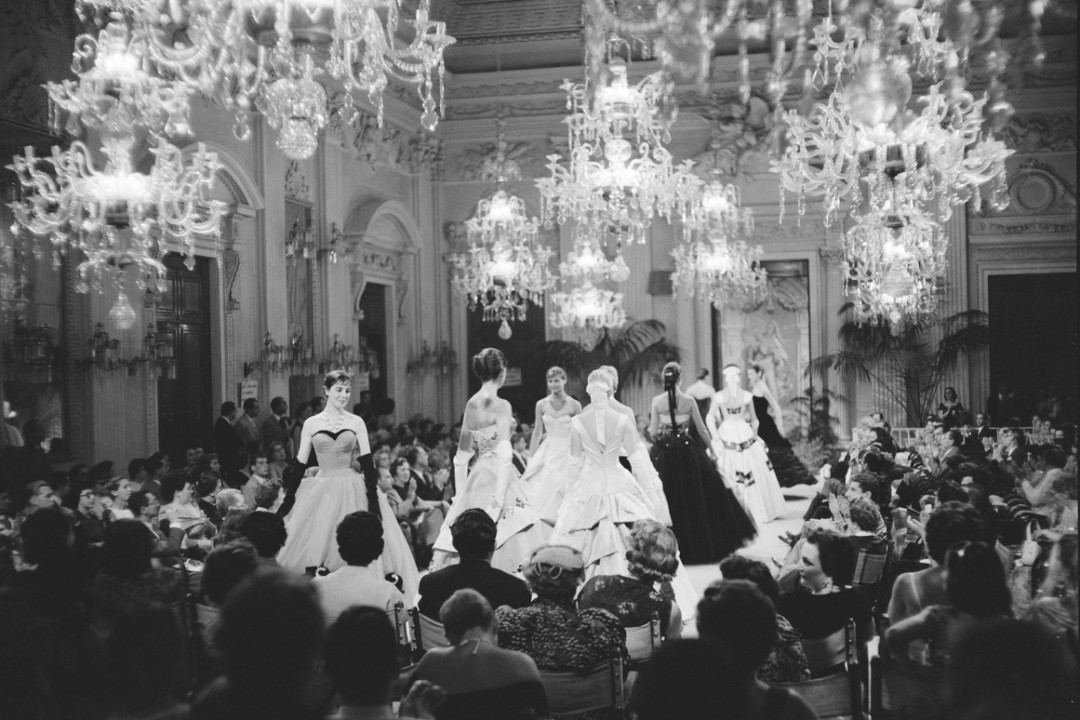
In those postwar years, Italian design came from nowhere to dominate the world’s concepts of swank, swell, and modern: Ferrari automobiles, Vespa scooters, Olivetti typewriters, movies by Fellini and Antonioni, and, most of all, understated, sexy clothes. It was, interestingly, an egalitarian movement. You might never court a contessa, or race in the Mille Miglia, or kiss Anita Ekberg or Marcello Mastroianni in the Trevi Fountain. But if you wore a Pucci gown or a Brioni suit, you could look the part.
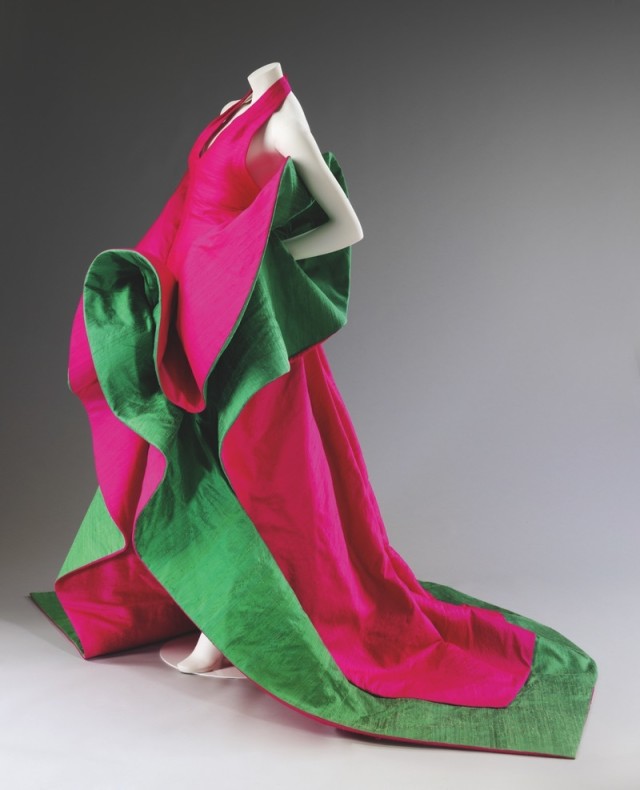
pink/green Roberto Capucci silk evening dress, 1987–88, Courtesy Roberto Capucci Foundation, ©Victoria and Albert Museum, London
Italian Style comes to PAM from the Victoria and Albert Museum in London, where it originated under the curatorship of Sonnet Stanfill, who sees even the show’s most elegant items as conceived on a human scale. “Fashion is often a harbinger of change, and a reflection of humanity’s optimism,” Stanfill says, “an optimism linked to the notion that one can always reinvent oneself, or present one’s best self, through a change of clothes.”
Portland Art Museum director Brian Ferriso adds that there’s something to be learned—a lesson especially apt for Portlanders. “This show is curated, and it’s researched,” Ferriso says. “There’s a thesis and a process of selection. It’s not just pretty things from someone’s closet.” As far back as 1951, he points out, PAM mounted a major exhibition of Italian craft and design titled Italy at Work. That show, he rightly notes, would be positively received even today in a Portland enamored of handmade goods and traditional artisanship—another point of connection between here, now, and there, then. The art in Italian Style is of a notably bespoke stripe that should resonate with today’s Portlanders.
Say Ciao to these Italian Style Events
- Feb 8 - Behind the Scenes of Italian Style: Fashion Since 1945 Curator Sonnet Stanfill discusses how she traced more than 70 years of Italian style, going over the research process, difficult choices, and star objects.
- Mar 8 - The Real Dolce Vita Film critic (and this feature’s essayist) Shawn Levy speaks on Italy’s post–World War II ride as a cultural trendsetter.
- Feb–May - Italian Style Film Series The Northwest Film Center and PAM curate a special selection of films showcasing the influential style of Italian fashion.
- Mar 26, Apr 2 - A Conversation on Local Fashion Eden Dawn (Portland Monthly’s style editor) and Marjorie Skinner (Portland Mercury) lead a conversation series covering the history, growth, and next directions of the local fashion scene.
- Apr 11 - Portland Style Tour The museum teams with Know Your City for an afternoon tour of Portland’s fashion and apparel scene. Meet with local makers at their design studios and workshops.
And, like any major museum show, Italian Style aims to do more than display lovely objects. Through the exhibition itself and an accompanying program of films, lectures, and educational events, Italian Style tells a fascinating cultural history, detailing how Italy recovered from the devastation of war and revived itself in the flourish of economic growth known to Italians as “Il Boom.”
In 1945, Italy was a smoldering ruin, decimated by a world war that also, in its final bloody throes, became a civil war between Mussolini’s Fascists and a homegrown resistance. Industries and infrastructure lay shattered from the Alps to Sicily. It was a time when American kids were told to finish their dinners because “there are children starving in Europe,” and when the most common image of life in Italy was the desperate poverty portrayed in such neorealist films as Bicycle Thieves and Shoeshine. By the end of the ’50s, though, Italy redefined itself: in the place of street urchins, movie stars and jet-setters swelled cafés and nightspots along Rome’s famed Via Veneto, home to the lifestyle that would come to be known as la dolce vita. A ferocious industrial expansion spurred a succession of triumphs in the worlds of culture and design, and contributed to “Hollywood on the Tiber,” when US moviemakers produced big-budget films in Rome. Italian movies, cars, nightlife, architecture, and décor became standards, even ideals, of global style. The nation’s fashion scene went from a stepsibling of Parisian couture to a thriving industry that helped fuel Italy’s economic revival and shaped the look of both everyday and high-end fashion for decades to come—particularly in the US, where the common attitude toward dress was less formal than that found in French or (especially for men) British fashion.
‘Italian Style’ aims to do more than display lovely objects.
Italian Style spans more than a half-century. In the late ’40s, Italian couturiers emerged by offering relatively low-cost alternatives to the creations of their more celebrated Parisian rivals. By the ’50s and ’60s, the combination of relaxed style, fine handiwork, and efficient manufacturing made Italian clothing an exciting and affordable model for the rest of the world. In the ’80s and beyond, the brand “Made in Italy” and names like Armani, Versace, Prada, Ferré, and Dolce & Gabbana, among many others, became synonymous everywhere with the highest levels of quality and chic.
There will be gowns in classic Valentino red, wild and groovy inspirations from Pucci, Armani suits of the sort that Richard Gere wore in American Gigolo, and even a bit of history: the Mila Schön sheath dress that Princess Lee Radziwill wore to Truman Capote’s 1966 Black and White Ball will be on display. There are also names which may not ring any bell but are central to the story. The Fontana sisters created couture for movie stars, royals, and socialites from the ’40s through the ’60s, moving from a cramped atelier near Rome’s Piazza di Spagna to the Oscars’ red carpet and the Kennedy White House. Simonetta Colonna di Cesaró, an actual duchess known professionally as Simonetta, composed part of her first couture collection, just after World War II, with dishrags and the worn-out uniforms of her household staff. Stylist/designer Walter Albini, in some regards, invented ready-to-wear as high-end fashion before his death in the first wave of the AIDS epidemic. Contemporary designers like Fausto Puglisi and Stella Jean represent, according to Stanfill, “the next generation of Italian fashion talent.”
The exhibition promises a feast of gorgeous and historic clothes and fine leathercraft, furriery, textiles, and knitwork. It will include a reconstruction of the famed Sala Bianca in Florence’s Pitti Palace, where the first important postwar Italian fashion shows were mounted, and screenings of the movies that gave the world its first glimpses of postwar Italian style. It’s even got some traces of local culture in its DNA: Emilio Pucci, famed for the wild color and striking patterns in his work, not only attended Reed College in the 1930s but launched his career as a designer when he whipped up uniforms for the school’s ski team. In its own elegant way, that’s very Portland—and very macaroni, indeed!
Italian Style: Fashion Since 1945 runs at the Portland Art Museum from February 7 to May 3. Shawn Levy is a Portland author whose latest book is De Niro: A Life. He is currently at work on a cultural history of Rome in the years following World War II.
Dressmaking
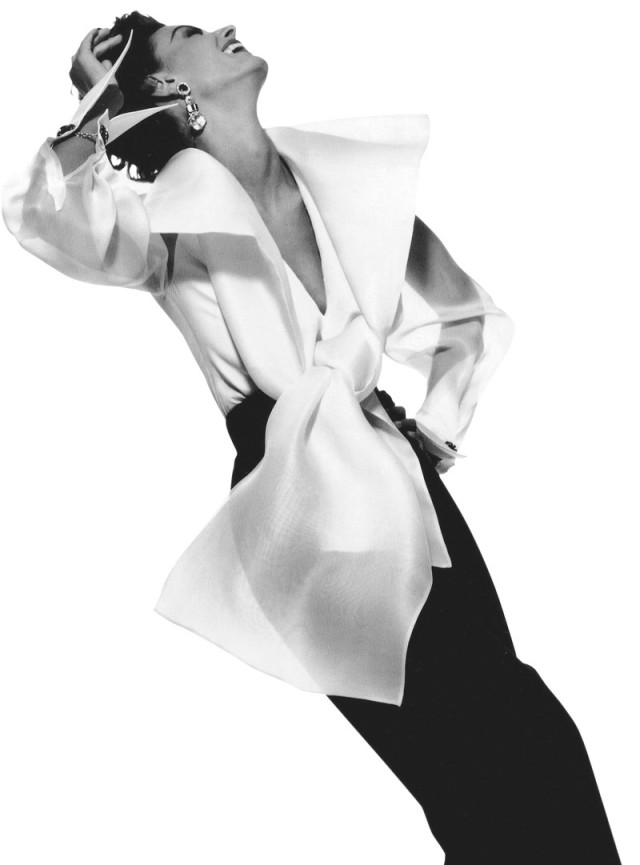
Courtesy Gian Paolo Barbieri for Gianfranco Ferre advertisement, Fall/Winter 1991, Model Aly Dunne, © Gian Paolo Barbieri
Moving through Italian Style’s dress section is like marching through the women’s movement itself. The collection begins with the likes of Sorelle Fontana’s nipped waists and the full skirts of the ladylike ’50s. In the ’60s, less precious, but still glamorous, collarless beaded jackets and shift dresses by color innovator Mila Schön and other designers take over.
As the decades progress, so does the garb, with Valentino using his signature red to turn dressmaking from dainty to downright sultry. The rise of working women—and the accompanying shoulder pads—materializes in bold plaid pieces by the late Gianni Versace. The emotional outpouring that followed Versace’s 1997 murder confirmed the rock-star status of the iconic designer. A final section of the show pays homage to Italian designers as prominent as the celebs they dress, with a glamorous dip-dyed look from Prada, red-carpet couture from Giambattista Valli, and a floral fantasy from Dolce & Gabbana.
Accessories
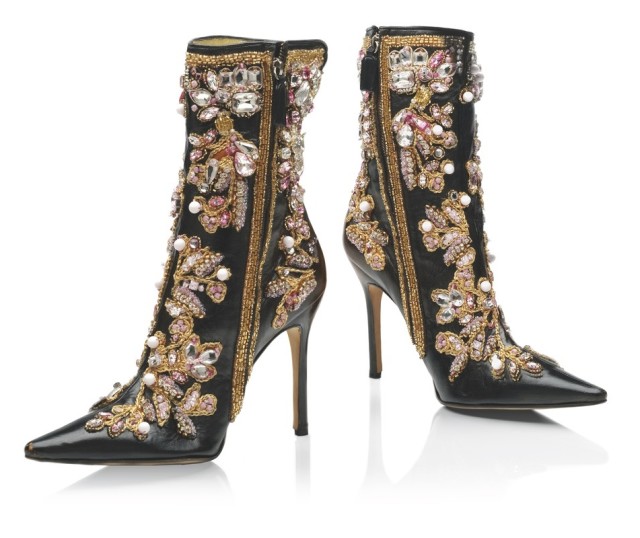
Dolce & Gabbana embroidered leather ankle boots, 2000, ©Victoria and Albert Museum, London
The Italians do many things right—a ripe Chianti, a juicy Caprese salad, iconographic art—but they really know how to accessorize. Hats, shoes, gloves, jewelry: the Boot overfloweth in these areas, with several stellar examples in Italian Style. Shoes abound, in suede, chiffon, and grosgrain satin, mounted on sturdy vintage heels from Frouiz, Massi, and Cavallera. Shiny new stilettos from Prada and Miu Miu provide the counterpoint, with classic Ferragamo in between. Luxurious leather goods range from decadent ’60s Gucci hatboxes to alligator Fendi bags, alongside elegant postwar suede gloves with hand-chain stitching. If shoes and purses aren’t your thing, look to the vintage 1959 Bulgari brooch that once belonged to Elizabeth Taylor.
Tailoring

Tom Ford for Gucci men’s velvet evening suit, Autumn/Winter 2004/5, ©Victoria and Albert Museum, London
Thanks to films like 1960’s La dolce vita, a wave of Italian-inspired style swept popular culture, and the nation’s casual cool became a benchmark for men the world over. The tailoring section of Italian Style runs from John F. Kennedy’s 1963 Litrico spezzato (a jacket and pant ensemble that don’t match) to a Carlo Palazzi traditional double-breasted trench coat with cinematic spy appeal. Slim, midcentury-modern looks give way to Piattelli’s wide lapels (and even wider ties) of the late ’60s and ’70s, before Armani launches Italian suiting’s American Gigilo phase, with boxier fits and wider cuts. But tailoring extends beyond menswear, as evidenced by a nearly pettable floor-length Valentino wool and sable coat or a pristine, winter-white wool gabardine coat and day dress by Laug. The beauty lies in the fit.

